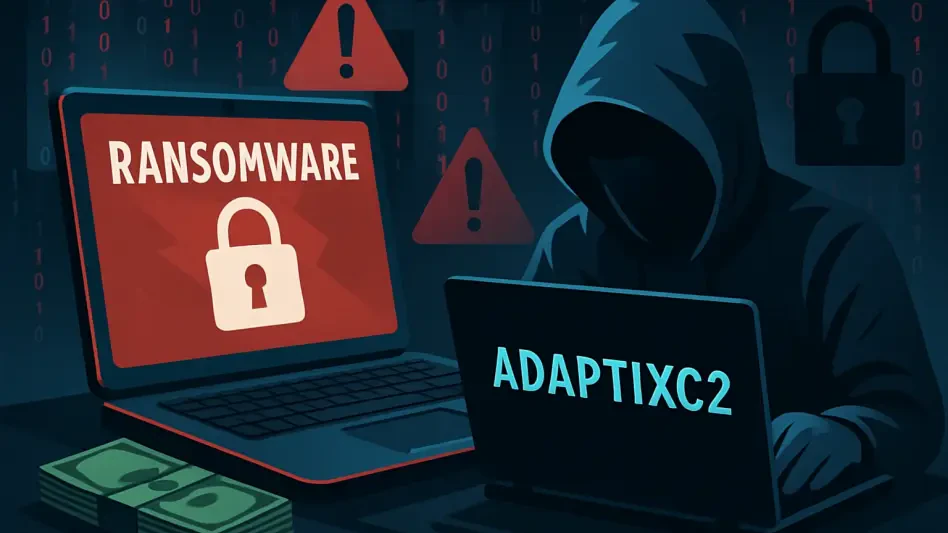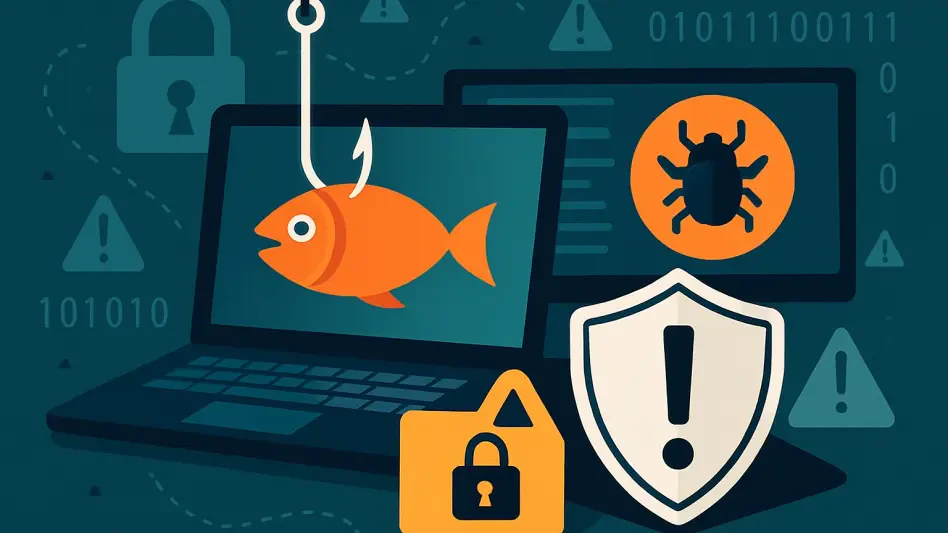In recent times, the cybersecurity landscape has been witnessing an alarming surge in cyberattacks targeting user logins and personal identity information. This troubling trend is largely driven by infostealer malware and sophisticated phishing toolkits that have proliferated in the digital realm. Cybersecurity firm eSentire has reported a staggering 156% increase in such attacks, impacting both office-bound and remote workers alike. As cybercriminals become increasingly adept at circumventing security measures, including multi-factor authentication, the need for robust defenses has never been more pressing. The shift from sporadic attacks to organized, service-driven operations raises urgent questions about the effectiveness of existing cybersecurity strategies and the actions needed to safeguard sensitive information.
Rise of Phishing-as-a-Service Platforms
Convenience Meets Criminal Intent
One major factor contributing to the rise in cyberattacks is the popularity of Phishing-as-a-Service (PhaaS) platforms that lower the technical barrier for cybercriminals. By offering pre-made phishing pages for popular services such as Microsoft 365 and Google Workspace at an affordable price, these platforms have democratized cybercrime. The notorious Tycoon 2FA stands out as one of these PhaaS providers, offering tools that capture login credentials and authentication tokens in real-time. Utilizing advanced Adversary-in-the-Middle techniques, these platforms often bypass even the most stringent security barriers like multi-factor authentication, posing severe risks to companies and individuals.
Global Impact and Defensive Strategies
Most PhaaS operations are based in the United States, reflecting their vast global reach and impact. As these threats continue to evolve, cybersecurity experts stress the necessity for businesses to adopt phishing-resistant methods and train employees to recognize and avoid fraudulent communications. The focus on 24/7 Managed Detection and Response services is gaining traction, ensuring that identity threats are addressed promptly. This comprehensive approach is critical in combating the pervasive status of these cyber threats and securing user logins from malicious intrusion. Collaboration between governments, industry leaders, and cybersecurity professionals is essential in forming a united front against such criminal activities.
Trends in Identity Theft and Browser-Based Phishing Attacks
Surge in Business Email Compromise
The sophistication of cyberattacks has taken an ominous turn with the increase in Business Email Compromise (BEC) cases. These incidents, having surged by 60% and accounting for 41% of attacks early in 2025, reveal the devastating potential of targeted identity theft. Cybercriminals exploit vulnerabilities within email systems to defraud businesses and individuals by impersonating trusted contacts or acquiring sensitive information illicitly. As BEC continues to rise, parties involved must reevaluate their cybersecurity protocols and consider adopting advanced email security measures. This challenge mandates a proactive approach such as closer scrutiny of email communications and verification processes.
Evolving Threat Landscape
In parallel, browser-based phishing attacks have seen a 140% increase according to Menlo Security, shedding light on the evolving threat landscape that organizations face. This surge emphasizes the necessity of using secure web gateways and deploying technologies capable of detecting and neutralizing these phishing attempts. Infostealers like Acreed are a testament to the competitive nature of the threat environment, as they attempt to outpace traditional security measures with updated variants. Education on cybersecurity best practices and continuous monitoring can play a pivotal role in ensuring better protection against browser-based threats. Organizations are urged to stay ahead of the curve by integrating these insights into their security protocols.
Need for Enhanced Cybersecurity Measures
Developing Robust Security Strategies
The significant rise in cyberattacks centered around phishing kits and identity theft underscores the pressing need for businesses and governments alike to bolster their cybersecurity defenses. Experts have been advocating for the adoption of more phishing-resistant methodologies alongside a comprehensive approach to monitoring and protecting digital assets. Creating awareness about recognizing fraudulent communications can empower users and significantly reduce the likelihood of falling victim to attacks. By integrating advanced security systems and protocols, organizations can better safeguard sensitive data, mitigating risks posed by increasingly sophisticated cyber threats.
Looking Forward: Strategic Collaboration
In striving to combat the pervasive nature of cyberattacks, it becomes crucial for various stakeholders to work collaboratively. Governments, industry leaders, and cybersecurity professionals can pool their resources and expertise to formulate ways in which user logins can be better protected against malicious intent. The rising global impact of these threats demands collective efforts and the sharing of data-driven insights to predict, resist, and overcome them. Through strategic collaboration, a framework aimed at reducing the scope and severity of cyber threats can be established, ensuring a safer digital environment for all users.
Strengthening Defenses Against Persistent Threats
A significant factor in the surge of cyberattacks is the rise of Phishing-as-a-Service (PhaaS) platforms, which simplify the process for cybercriminals by reducing the need for technical expertise. These platforms provide ready-to-use phishing pages for widely-used services like Microsoft 365 and Google Workspace, making cybercrime more accessible and affordable. One notable example is Tycoon 2FA, a notorious PhaaS provider offering sophisticated tools that can intercept login credentials and authentication tokens as they are entered. These platforms employ advanced Adversary-in-the-Middle techniques to circumvent even robust security measures like multi-factor authentication. This ability to easily bypass security protocols poses significant threats to both businesses and individuals who rely on these measures for protection. Organizations must be vigilant and proactive in adopting enhanced security strategies to counter these growing threats, as traditional defenses are often insufficient against such advanced cybercriminal tactics.








